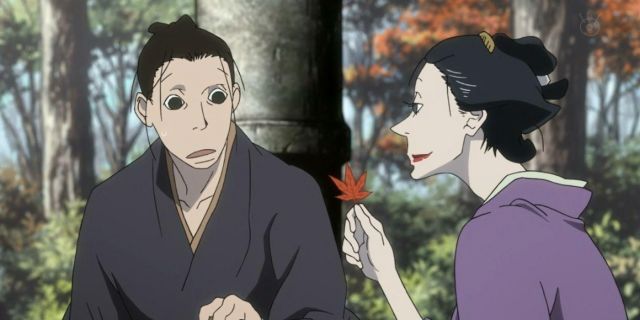Being made in Japan, it makes sense that anime would tackle themes and concepts from Japanese cultural history. The samurai is a frequent element that shows up in anime, but many of these shows are more stylized and action-oriented. In the case of a forgotten 2010 series, however, samurai anime expectations are completely upended.
House of Five Leaves adapts a manga of the same name, focusing on a samurai that was far from a hot-blooded action hero. As much a drama as it is a story about fighting, House of Five Leaves is a modern classic that deserves a second look. With the show now over 10 years old, here’s a look back at what makes the anime different from audience expectations.
What Was House of Five Leaves About?

House of Five Leaves is a 2010 anime series based on the manga from Natsume Ono, which ended the same year that the anime was released. Set in the Edo period, the show is based around a world of samurai, though its protagonist isn’t exactly one with his sword. Masanosuke Akitsu is incredibly timid despite his swordsmanship abilities. This has seen him lose countless jobs as a hired ronin, forcing him to fall in with a group of bandits in order to make money.
The bandits in the Five Leaves are all quite different from Akitsu, each with their own quirks and some growing to dislike Akitsu’s naive and quiet temperament. Despite this, he becomes increasingly intrigued by them, even as their actions contrast with his sense of morality. The series isn’t particularly long, with its 12 episodes handled by the now-defunct studio Manglobe. Ironically, Manglobe also produced the much more well-known series Samurai Champloo in 2004. Though it definitely wasn’t the hit that series was, House of Five Leaves is still a show worth watching for samurai aficionados and enthusiasts of slightly more obscure anime.
House of Fives Leaves Was the Anti-Samurai Anime

Instead of an adrenaline rush of violence and action, House of Five Leaves is much more a character-drama, albeit one where said characters happen to be samurai. The motives for the cast joining the Five Leaves group are all showcased and built upon, making them all feel developed in a way that more hot-blooded shows might not do for their protagonists. The writing is down-to-earth, with certain characters having well-written tragic pasts and no one coming off as a stereotype or archetype. Main character Masanosuke goes completely against the grain for Japanese swordsmen, and there’s little of the stoic, powerful samurai cliché to be found in his character. There are still action sequences, but even these have a level of finesse unseen in many other samurai anime. There’s a lot of planning and information-gathering throughout the series, putting true action firmly on the back burner.
These events are all made even more unconventional with House of Five Leaves’ rather strange art style. The art and character designs are incredibly stylized, with pointy noses and gloomy black eyes being the norm. When combined with how “soft” some of the designs looks, this creates the imagery of a traditional seinen or even a boy’s love series, even though that’s not the case in the latter. The result is a show that feels interestingly serene and calming for the most part, furthering the sense that it’s the exact opposite of most samurai shows.
Perhaps due to the lack of streaming options at the time, House of Five Leaves never made much of a major impact on mainstream audiences, especially those overseas. Despite that, it was very well-received by those who saw it, and it’s easier to watch now more than ever. The Crunchyroll streaming service hosts the series, as does fellow streaming service RetroCrush. It might not be an action-packed slash-fest, but House of Five Leaves is certainly an interesting look at how the samurai genre can be completely upended in the service of incredibly strong, character-driven storytelling.















Leave a Reply